- Home
- James Joyce
Portrait of the Artist as a Young Man and Dubliners (Barnes & Noble Classics Series) Page 2
Portrait of the Artist as a Young Man and Dubliners (Barnes & Noble Classics Series) Read online
Page 2
Such a fate was far from evident in the early reaction to his writing: Both his collection of fifteen short stories, Dubliners (1914), and his autobiographically based first novel, A Portrait of the Artist as a Young Man (1916), very nearly never saw the light of day. The eventual publisher of Dubliners, London-based Grant Richards, first issued Joyce a contract for the book in February 1906; the collection itself wasn’t published until more than eight years later, however, and after a running battle with a series of publishers and printers that Joyce described in an open letter, “A Curious History,” which he later proposed Richards publish as a preface to the book. At issue, first and foremost, were questions of obscenity and libel—epiphenomena of the realism of Joyce’s stories—for which publishers believed they would be prosecuted. Joyce’s indiscretions are, by contemporary standards, quite tame: A man conducting an adulterous affair is described as having “two establishments to keep up”; King Edward VII is called by one character “a bit of a rake”; and the obscene colloquialism “bloody” pops up with uncomfortable frequency in the second half of the collection. At the same time, as Joyce peevishly pointed out in a 1906 letter to Richards, the much grosser obscenity of stories like “An Encounter” and “The Boarding House” had been completely overlooked. Richards replied, by return mail, that “On consideration, I should like to leave out altogether ‘The [sic] Encounter.’” Censors very rarely have a sense of humor.
In “A Curious History,” Joyce throws in the towel: I wrote this book seven years ago and, as I cannot see in any quarter a chance that my rights will be protected, I hereby give Messrs Maunsel publicly permission to publish this story [“Ivy Day in the Committee Room”] with what changes or deletions they may please to make and shall hope that what they may publish may resemble that to the writing of which I gave thought and time.... I, as a writer, protest against the systems (legal, social and ceremonious) which have brought me to this pass (James Joyce, Letters, edited by Stuart Gilbert and Richard Ellmann, New York: Viking Press, 1957-1966; vol. 2, p. 293).
The pre-publication difficulties of Dubliners mark a minor episode in the larger struggle over censorship that was waged by early twentieth-century writers like D. H. Lawrence and Radclyffe Hall, and was fought most memorably over Joyce’s own 1922 masterpiece Ulysses. As it turns out, Joyce’s “A Curious History” was curiously proleptic, however : It was written in August 1911, when the book’s strange odyssey was barely half done. A Dublin edition of the stories, having been set in type by Maunsel & Co., was summarily destroyed by a scrupulous printer in September 1912. On the back of the annulled contract Joyce wrote a broadside poem, “Gas from a Burner”; it opens with these lines, spoken by a figure compounded of Maunsel’s manager, George Roberts, and the scandalized printer, John Falconer:Ladies and gents, you are here assembled
To hear why earth and heaven trembled
Because of the black and sinister arts
Of an Irish writer in foreign parts.
He sent me a book ten years ago.
I read it a hundred times or so,
Backwards and forwards, down and up,
Through both ends of a telescope.
I printed it all to the very last word
But by the mercy of the Lord
The darkness of my mind was rent
And I saw the writer’s foul intent (Joyce, Critical Writings,
pp. 242-243; see “For Further Reading”).
As Joyce’s poem closes, the heretical work goes up in flames, as all heretics must: “I’ll burn the book, so help me devil. / I’ll sing a psalm as I watch it burn” (p. 245). While Joyce’s martyr imagination believed his book to have been burned, in fact the print run was probably just cut and pulped; having come this close to fruition, however, the book’s publication was thus delayed by another twenty-one months, until Grant Richards stepped back into the fray and brought the book out in June 1914.
Even while Dubliners was fitfully slouching toward London to be born, Joyce was at work on his first novel, A Portrait of the Artist as a Young Man (as well as his first volume of poems, Chamber Music, published in 1907). Conceptually, Portrait is the earlier book: Its germ is to be found in a 2,500-word essay that Joyce wrote on January 7, 1904, “A Portrait of the Artist,” whereas the earliest of the Dubliners stories, “The Sisters,” was not begun until six months later. Like Dubliners, Portrait nearly went up in flames before it found its readership: In a famous story, the unfinished manuscript was snatched from the fireplace by Joyce’s sister Eileen in 1911, after Joyce had thrown it on the flames in a fit of despair.
This rescued manuscript had already gone through an intermediate stage, in which the short essay “A Portrait” was expanded into an unfinished novel of twenty-six chapters; the remaining portions of that earlier version were published after Joyce’s death as Stephen Hero, though the manuscript is said to have been rejected by twenty different publishers before Joyce began its wholesale revision as Portrait. Even with the novel in its final form, however, and with both Chamber Music and Dubliners already in print, Joyce had a great deal of difficulty finding a home for Portrait. In what is surely a characteristic opinion, the reader’s report prepared for the publisher Duckworth & Co. in June 1916 found both Joyce’s social realism and his narrative experimentation a bit too much to contend with:James Joyce’s “Portrait of the Artist as a Young Man” wants going through carefully from start to finish. There are many “longueurs” [boring passages]. Passages which, though the publisher’s reader may find them entertaining, will be tedious to the ordinary man among the reading public.... It is too discursive, formless, unrestrained, and ugly things, ugly words, are too prominent; indeed at times they seem to be shoved in one’s face, on purpose, unnecessarily....
The author shows us he has art, strength and originality, but this MS. wants time and trouble spent on it, to make it a more finished piece of work, to shape it more carefully as the product of the craftsmanship, mind and imagination of the artist (James Joyce, A Portrait of the Artist as a Young Man: Text, Criticism, and Notes, edited by Chester G. Anderson, New York: Viking Press, 1968, p. 320).
Having worked on the novel by turns for more than twelve years, Joyce cannot have been pleased to read that the manuscript was in need of “time and trouble spent on it.” Although the author of the report acknowledged that some of “the old conventions” concerning fiction were then falling away, he could not yet discern the larger outlines of Joyce’s narrative experiment, in which great “time and trouble” were spent precisely in honing the novel’s continually evolving prose—blurring his protagonist’s ultimate fate and the novel’s plot trajectory, as Joseph Conrad had done in Heart of Darkness, in a healthy dose of narrative fog.
While Joyce struggled against what, in “A Curious History,” he called “legal, social and ceremonious” systems in order to get Dubliners published, his vision for the stories seems not to have changed significantly from his earliest conception: It was from the beginning to be a collection written “to betray the soul of that hemiplegia [partial paralysis] or paralysis which many consider a city,” written “for the most part in a style of scrupulous meanness.” In writing Portrait, on the other hand—his troubles with publishers notwithstanding—Joyce’s main hurdles were personal and artistic, not public. In the 1904 essay, he writes with dissatisfaction about the conventions of autobiography, in which the “features of infancy” are presented only in their “iron, memorial aspect”: Youth is narrated only from the hindsight of maturity, and with a false confidence that betrays the real uncertainty of those early years. Joyce states as a goal—though one he is unable satisfactorily to accomplish in the early essay—an autobiographical style that would present the past as “a fluid succession of presents, the development of an entity of which our actual present is a phase only.” The essay’s opening, manifesto-like paragraph concludes with the statement that for those exceptional individuals for whom an autobiography is a worthwhile undertaking, “a portrait is not
an identificative paper but rather the curve of an emotion.”
Joyce thus sought to forge (a word that plays an interesting role in Portrait, as we’ll see) a style of shifting emphases and perspectives, drawing its imagery and vocabulary from different sources during dif ferent periods of his protagonist’s life—a technique we might today, in light of the nearly simultaneous work in narrative technique being carried out in England by writers like Conrad and Ford Madox Ford, call “impressionism.” Joyce’s “Portrait” essay is certainly impressionistic—nearly to the point of incomprehensibility; his impressionism in presentation is combined with a preciosity of style, rendering the resultant text narrowly self-involved. Over the years of its genesis, however—and because of, not merely in spite of, its trials and persecutions—this first “Portrait” became A Portrait of the Artist as a Young Man, achieving a nearly perfect accommodation of style to mood and thought—“the curve of an emotion,” precisely. In the much-discussed 1997 Random House poll that named Joyce’s Ulysses the number-one novel of the twentieth century, Portrait came in a close third, behind F. Scott Fitzgerald’s The Great Gatsby; this novel that nearly arrived stillborn has now been confirmed as a twentieth-century classic and has been installed as a mainstay of high-school and college curricula in English-speaking countries around the world.
Though written very nearly in tandem, Dubliners and A Portrait of the Artist as a Young Man have very different agendas, and represent very different reading experiences, as well. We might, for purposes of illustration, think of Joyce’s first two works of fiction as representing critiques of two rather different literary genres: Dubliners, a critique of the short story as Joyce had inherited it, in which complicated psychological struggles are simplified and resolved in the course of three thousand words; and Portrait, a critique of the deeply romantic legacy of the Bildungsroman (novel of education and maturation) and its close relative the Kunstlerroman (which focuses on the development of the artist), forms that perpetuated a notion of heroism wholly unsuited to the realities of life and art in the twentieth century.
If early readers and critics of Dubliners were taken aback by Joyce’s unflinching reportage of the sordid details of modern urban life, contemporary readers are more often struck by the stories’ very abrupt endings : Time and again they seem merely to stop, dead in their tracks, rather than properly ending. The first three stories, in this regard, are representative. “The Sisters” ends while one of the eponymous sisters is in mid-conversation, mid-sentence: “So then, of course, when they saw that, that made them think that there was something gone wrong with him.... The ellipsis that closes the story is just one of twenty sets in this very elliptical three-thousand-word story, in which meaning seems to lie just behind the words, in between the words, peeking out at us but ultimately eluding us. At the close of the second story, “An Encounter,” our narrator calls for help to his friend Mahoney, but this message is relayed along with confession of a sin we cannot understand, or even guess at: “And I was penitent; for in my heart I had always despised him a little”. Hence, rather than the sort of closure a short story is supposed to provide, “An Encounter” opens up, vertiginously, on a host of other issues just when it should be shutting down new possibilities. The beautifully lyrical ending of “Araby“ has been much analyzed, and to read the criticism, one would think that there’s nothing at all out of the way about the narrator’s sudden outburst in his closing sentence: “Gazing up into the darkness I saw myself as a creature driven and derided by vanity; and my eyes burned with anguish and anger.” What—? Revelation, it seems, arrives from out of the blue (or black), but we readers can neither see it coming nor figure out with any certainty whither it will lead our protagonist.
These three stories—and many others in the collection besides, including “Eveline,” “Two Gallants,” “The Boarding House,” “Clay,” “A Painful Case,” “Ivy Day in the Committee Room,” and “The Dead”—focus on the moment of sudden revelation that Joyce called, after the traditions of the Catholic Church, an “epiphany.” A full description of the epiphany is one of the elements that Joyce stripped out of Stephen Hero in making Portrait, if we turn back to that earlier text, however, we discover the following explanation of the place of the epiphany in Stephen Dedalus’s evolving aesthetic philosophy:This triviality [of a banal conversation he has overheard] made him think of collecting many such moments together in a book of epiphanies. By an epiphany he meant a sudden spiritual manifestation, whether in the vulgarity of speech or of gesture or in a memorable phase of the mind itself. He believed that it was for the man of letters to record these epiphanies with extreme care, seeing that they themselves are the most delicate and evanescent of moments (James Joyce, Stephen Hero, edited by John J. Slocum and Herbert Cahoon, second edition, New York: New Directions, 1963, p. 211).
This insistence on the importance of the trivial plays throughout both Dubliners and Portrait; and a great deal of scholarly attention has been paid over the years to the concept of the epiphany. Without rehearsing in detail that voluminous scholarship, we might pause here to note that the terse description given in Stephen Hero describes a locus for the epiphany (in “everyday life”) and an agent of the epiphany (the writer); if much of public life consists of playing some kind of role, wearing a mask, an epiphany is one of those rare moments when the mask slips, and we see past convention, past language, and glimpse some fundamental truth about human nature. But the question of for whom the timeless human truth of the situation is suddenly made manifest, apart from the writer who records it, is left somewhat ambiguous.
In the first three stories, our narrator is also the story’s protagonist; hence if the narrator experiences a “sudden spiritual manifestation,” we know that perforce our protagonist has, too. Things get much messier in the remaining twelve stories, though, in which characters are not left to tell their own tales; what confidence do we have that Mr. James Duffy in “A Painful Case,” for instance, has in fact come to terms with the revealed human bankruptcy of his life? The proper understanding of these epiphanies, and their proper role in an overall understanding of the Dubliners stories, is still a matter of some debate; it might help to suggest the richness of these stories, though, if we note only that truth can certainly be made manifest—to an author, his narrator, even his readers—without that truth ever quite penetrating the thick psychological defenses of his characters. One interesting index of this possible refusal of their epiphanies by various of the Dubliners characters is the image of the mirror: Think of Bob Doran, Mrs. Mooney, and her daughter Polly, as each comports him- or herself at the mirror in “The Boarding House”; think of Mr. Duffy, as he is confronted with the image of himself in the laborious, droning train “winding out of Kingsbridge Station”; think, perhaps, of Gabriel Conroy in “The Dead,” eschewing light and avoiding mirrors in the Gresham Hotel as his story builds to its tragic climax. Joyce borrowed his term for these dramatically revealing moments from the apparition of the Christ child to the Magi, from the account in the Gospel of Matthew; part of what Joyce so disturbingly suggests, time and again in Dubliners, is that contemporary magi would sooner deny the reality of what they had seen, would, like Mr. Duffy, sooner “doubt the reality of what memory” tells them, than come to terms with the difficult changes their revelations would seem to demand of them.
This skepticism about human beings’ willingness, or ability, to change is of a piece with Joyce’s stylistic regimen, what he called “a style of scrupulous meanness”: a style, in other words, that places an absolute moral value on truth-telling. Given the aesthetic detachment from ethical and political concerns evidenced by much twentieth-century literature, Joyce’s early remarks about Dubliners sound almost naive: He writes to Grant Richards, for instance, that “my intention was to write a chapter of the moral history of my country” (Letters, vol. 2, p. 134), and later that “I believe that in composing my chapter of moral history in exactly the way that I have composed it I have taken the
first step towards the spiritual liberation of my country” (Letters, vol. 1, pp. 62-63). A month later, Joyce further opines that should Richards decide not to publish the book, “I seriously believe that you will retard the course of civilisation in Ireland by preventing the Irish people from having one good look at themselves in my nicely polished looking-glass” (Letters, vol. 1, p. 64). Surely comments like these, even as they confirm some of the worst stereotypes of artistic egotism, stand as a healthy corrective to the common depiction of the modernist writers as disaffected aesthetes, unconcerned about the moral or political dimension of their work.
Concerned as he is with the moral paralysis of the people of Dublin—a diagnosis which, Joyce knew well enough, applied equally to the denizens of any modern city—the stories of Dubliners at the same time explore the special responsibilities of the man of letters in general, and the artist in particular. The volume’s last and greatest story, “The Dead,” stands as a case in point; in it, Joyce explores the death-in-life of a handful of Dubliners, but most poignantly, perhaps, that of the story’s protagonist, Gabriel Conroy: a figure of what Joyce feared he might have become, had he not left Dublin permanently for the continent in 1904. Gabriel is intelligent, well-educated, a man of the world; he vacations in Belgium, not the west of Ireland, teaches and reviews books, makes learned allusions to Greek mythology and the poetry of Robert Browning in his after-dinner remarks—he even wears galoshes! Yet he is, for all that, another paralytic soul: His nose is put out of joint three different times before dinner is even served, as minor resistance from other guests at his aunts’ party (Lily, his wife Gretta, and Molly Ivors) put in peril his oversize yet fragile male ego. He proceeds to use his speech to take revenge on a college friend no longer at the party, and parades his own learning at the expense of his aunts’ pleasure; and in the climactic scene at the Gresham Hotel, which includes one of the best known and most beautiful passages in all of modern literature, Gabriel’s petulant anger (fueled by a frustrated “pang of lust”) ruins an opportunity to know his wife yet more intimately and honestly than hitherto he ever has.

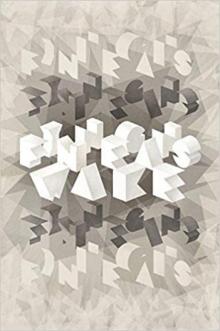 Penguin Classics the Restored Finnegans Wake
Penguin Classics the Restored Finnegans Wake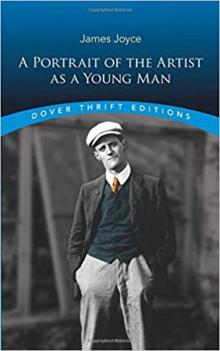 A Portrait of the Artist as a Young Man (Dover Thrift Editions)
A Portrait of the Artist as a Young Man (Dover Thrift Editions)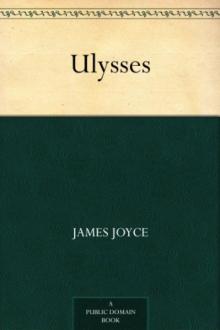 Ulysses
Ulysses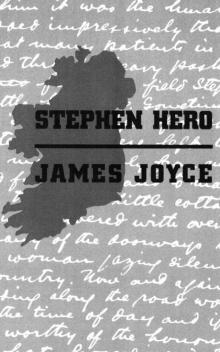 Stephen Hero
Stephen Hero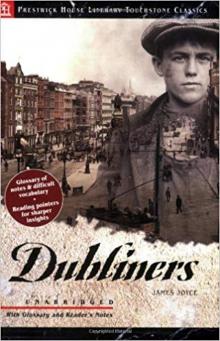 Dubliners
Dubliners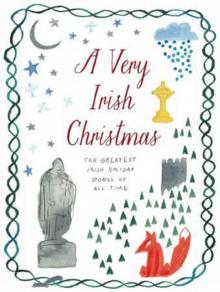 A Very Irish Christmas
A Very Irish Christmas The Complete Works of JAMES JOYCE
The Complete Works of JAMES JOYCE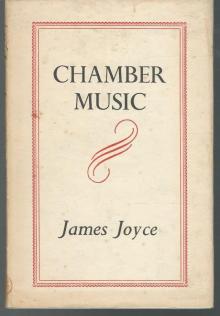 Chamber Music
Chamber Music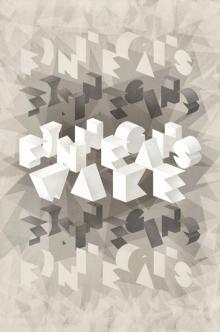 The Restored Finnegans Wake
The Restored Finnegans Wake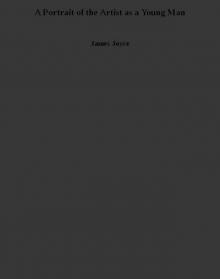 A Portrait of the Artist as a Young Man
A Portrait of the Artist as a Young Man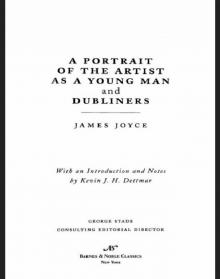 Portrait of the Artist as a Young Man and Dubliners (Barnes & Noble Classics Series)
Portrait of the Artist as a Young Man and Dubliners (Barnes & Noble Classics Series)